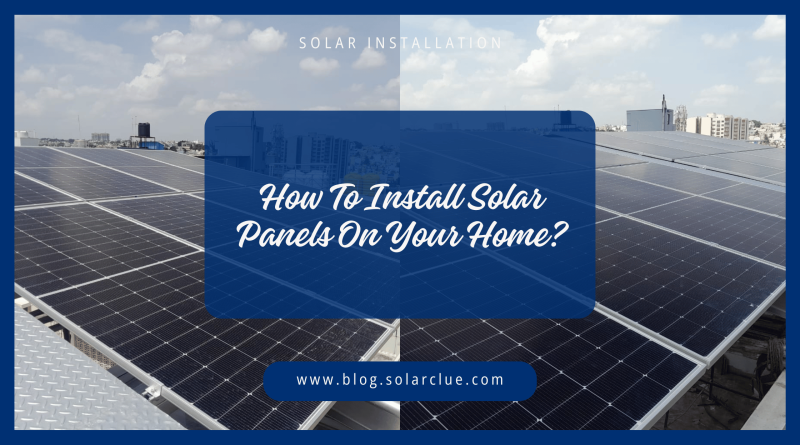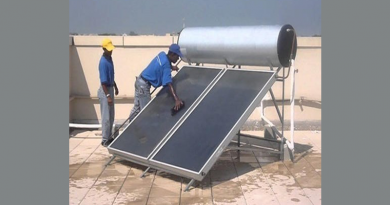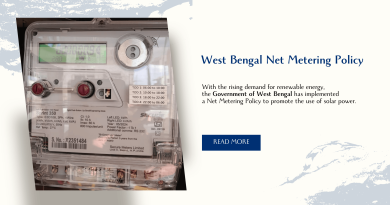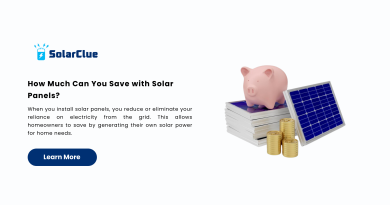How To Install Solar Panels On Your Home?
Installing solar panels on your home is a significant step toward sustainable living and reducing electricity costs. This comprehensive guide will walk you through the entire process, from assessing your roof’s suitability to maintaining your solar system, ensuring a smooth transition to solar energy.
Table of Contents
- 1 Assessing Roof Suitability
- 2 Determining System Size
- 3 Tips for Maximizing Energy Production and Cost Savings
- 4 Choosing a Solar Installer
- 5 Understanding the Installation Process
- 6 Maintaining Your Solar System
- 7 Maximizing Energy Production and Cost Savings
- 8 Common Challenges and Troubleshooting
- 9 The Future of Residential Solar Power
- 10 FAQs
Assessing Roof Suitability
Roof Orientation and Angle
The orientation and angle of your roof significantly impact solar panel efficiency. Ideally, solar panels should face south in the Northern Hemisphere and north in the Southern Hemisphere to capture maximum sunlight. The optimal roof angle is typically between 15 and 40 degrees, depending on your location.
Structural Integrity
Ensure your roof can support the weight of solar panels. A professional inspection can determine if any repairs or reinforcements are needed before installation.
Shading and Obstructions
Assess your roof for shading from trees, chimneys, or nearby buildings. Shading can reduce the efficiency of your solar panels. Trim trees or remove obstructions if possible.
Determining System Size
Understanding Solar Panel System Components
A solar panel system consists of several components:
Solar Panels: Capture sunlight and convert it into electricity.
Inverter: Converts direct current (DC) from the panels into alternating current (AC) for home use.
Mounting System: Secures the panels to your roof.
Battery (Optional): Stores excess energy for later use.
Monitoring System: Tracks the system’s performance.
Calculating Your Home’s Energy Consumption
Review your electricity bills to determine your average monthly energy consumption in kilowatt-hours (kWh). This information will help you size your solar panel system to meet your energy needs.
Obtaining Permits
Check local regulations for required permits. The permitting process may involve submitting plans, paying fees, and scheduling inspections. Your solar installer can often assist with this process.
Tips for Maximizing Energy Production and Cost Savings
| Tip | Description |
|---|---|
| Optimal Panel Placement | Ensure panels are installed at the ideal angle and orientation to capture maximum sunlight. |
| Regular Maintenance | Keep panels clean and check for damage regularly. |
| Energy-Efficient Appliances | Use energy-efficient appliances to reduce overall energy consumption. |
| Monitor System Performance | Use a monitoring system to track performance and detect issues early. |
| Take Advantage of Incentives | Utilize federal, state, and local incentives and rebates to reduce upfront costs. |
| Battery Storage | Consider adding battery storage to store excess energy and use during peak hours or outages. |
| Net Metering | Sign up for net metering programs to sell excess energy back to the grid and offset electricity costs. |
By following these guidelines and tips, you can successfully install and maintain a solar panel system on your home, maximizing energy production and cost savings while contributing to a sustainable future.
Choosing a Solar Installer
DIY vs. Professional Installation
DIY Installation:
- Pros: Cost savings, personal satisfaction.
- Cons: Requires technical knowledge, time-consuming, potential safety risks.
Professional Installation:
- Pros: Expertise, faster installation, warranties, and support.
- Cons: Higher upfront cost.
Safety Precautions
- Use proper safety gear (harnesses, gloves, etc.).
- Ensure the electrical system is off during installation.
- Follow manufacturer instructions carefully.
Understanding the Installation Process
1. Site Assessment: The installer evaluates your roof and energy needs.
2. Design and Permits: The installer designs the system and obtains necessary permits.
3. Installation: Panels, inverters, and mounting systems are installed.
4. Inspection and Connection: The system is inspected and connected to the grid.
5. Activation: Once approved, the system is activated, and you start generating solar power.
Maintaining Your Solar System
1. Regular Cleaning: Remove dirt, leaves, and debris from panels.
2. Inspection: Periodically check for damage or wear.
3. Monitoring: Use your monitoring system to track performance and detect issues early.
Maximizing Energy Production and Cost Savings
Financial Incentives and Rebates
Look for federal, state, and local incentives and rebates to reduce upfront costs. These may include tax credits, grants, and rebates.
Common Challenges and Troubleshooting
- Shading Issues: Trim trees and remove obstructions.
- Performance Drops: Check for dirt, debris, or panel damage.
- Inverter Problems: Ensure proper ventilation and contact your installer for issues.
The Future of Residential Solar Power
Advancements in solar technology, such as more efficient panels and energy storage solutions, will continue to improve the viability and affordability of residential solar power.
Here at SolarClue®, we offer a smart, practical, and “beautiful” solution. You will be answered for all the questions related to Solar.
We provide all kinds of brands that are the Best Solar panels in India.
If you are the one who is planning for the solar power system. Don’t hesitate to contact our team!
Looking forward to empowering you with solar energy, just like hundreds of our other clients!
FAQs
1. How long does a solar panel installation take?
A typical installation takes 1-3 days, depending on system size and complexity.
2. Can I install solar panels on any type of roof?
Most roofs can support solar panels, but certain materials (e.g., slate, wood) may require specialized mounting systems.
3. What happens during a solar panel inspection?
Inspectors check the installation for compliance with safety standards and ensure the system operates correctly.
4. How much can I save with solar panels?
Savings vary based on system size, energy consumption, and local electricity rates. Most homeowners save between 50-75% on their electricity bills.
5. Do solar panels work during a power outage?
Standard grid-tied systems do not work during power outages. However, systems with battery storage can provide power during outages.




